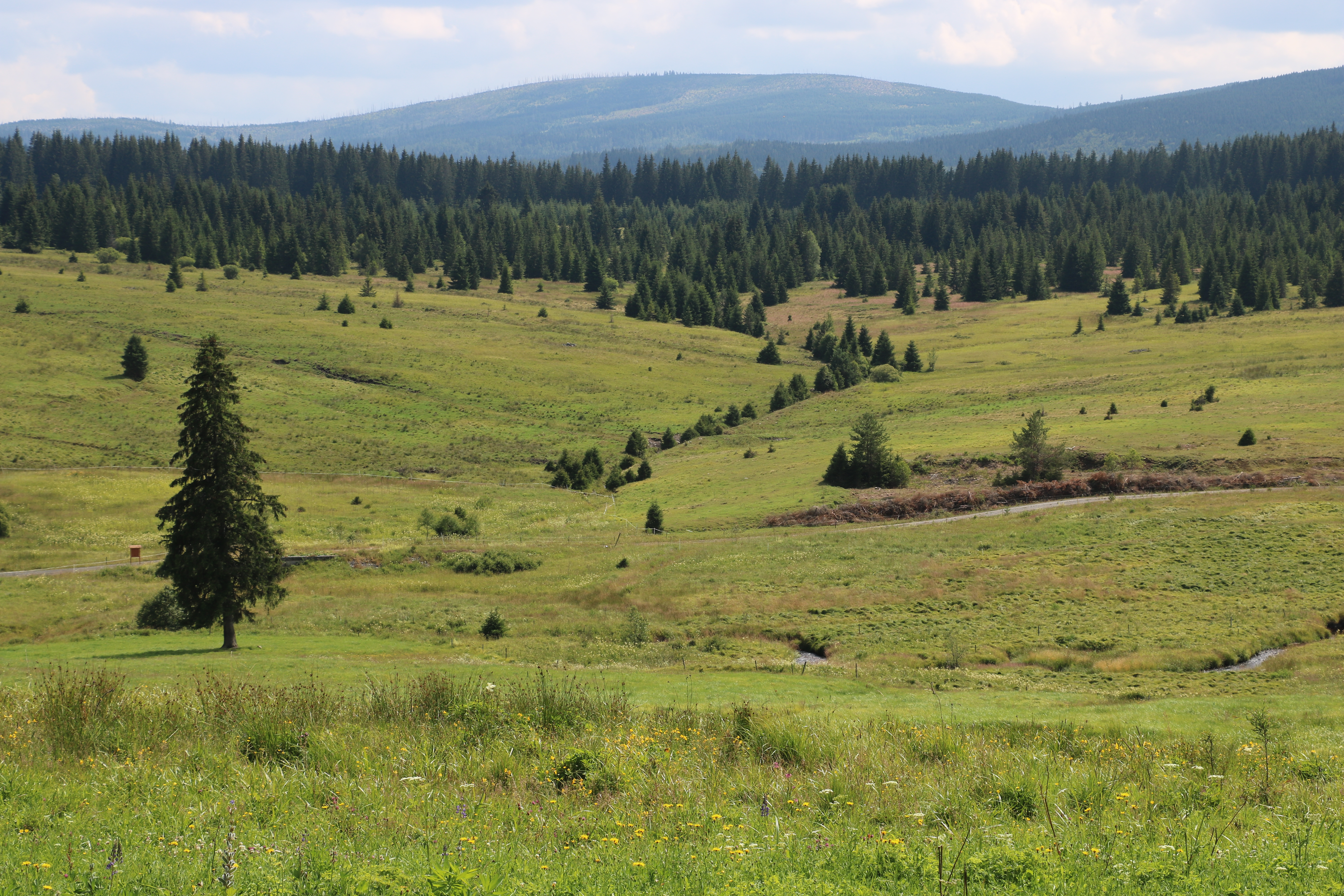D2C - Field work continues in summer
16-08-2019
Also during summer, experts from NGO Ametyst work throughly in the field to learn more about nature in Green Belt. We visited together 15 selected localities accross Pilot Region 1at the Czech site. The area stretches from the very south in the so-called gap (unprotected land) between Novohradské hory and Šumava, to the northwest range of the Šumava Mountains. Field surveys are focused especially on hazel grouse, capercaillies and other bird species and also meadows. We coordinate collection of data for ground truthing of Sentinel data.
One of the localities, Zhůří at the Křemelná River is located in very beautiful landscape with meandering river surrounded by peatbogs, transition mires, wet meadows, Nardus grasslands, mountain meadows and pioneer birch forests. There occur many of EUNIS habitats, such as C2.3 Permanent non-tidal, smooth flowing watercourse, D2.3 Transition mires and quaking bogs, E2.22 Sub-Atlantic lowland hay meadows, E3.41 Atlantic and sub-Atlantic humid meadows, E1.71 Nardus stricta swards. We were lucky to find rare plant species such as common moonwort (Botrychium lunaria), greater butterfly-orchid (Platanthera chlorantha), lousewort (Pedicularis palustris), meadow-flax (Thesium pyrenaicum). From birds we observed for example many families of red-backed shrikes and whinchats – adults feeding young birds. In the river valley we admired the effectivity of beaver revitalisation of water course. The dams are build at several places.
All these particular data and observations help us to think about and prepare strategy for Green Belt in Pilot Region 1.

